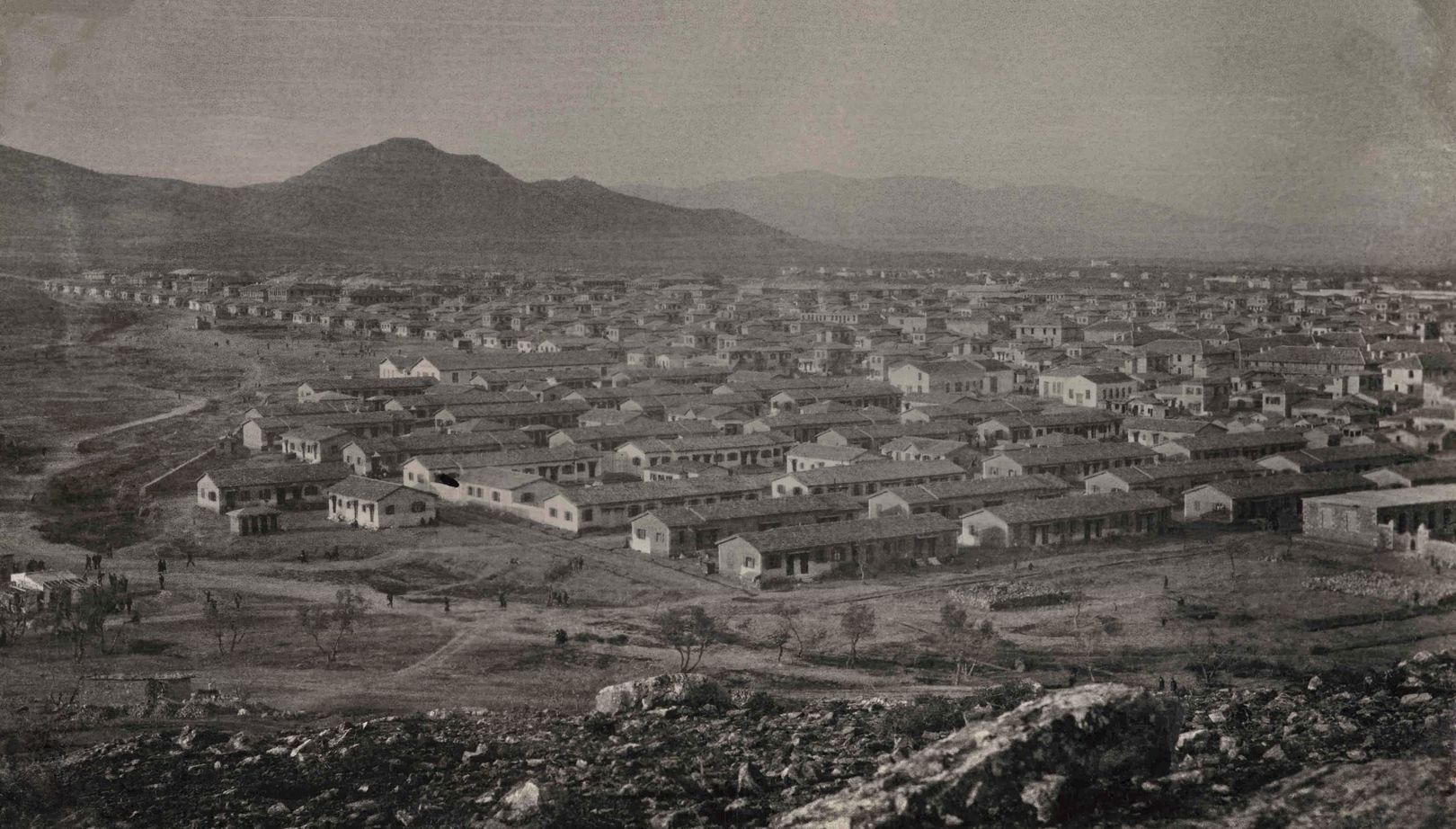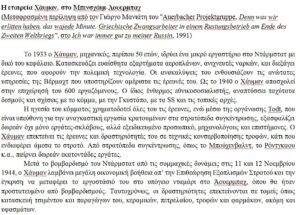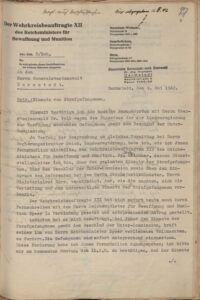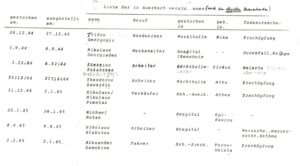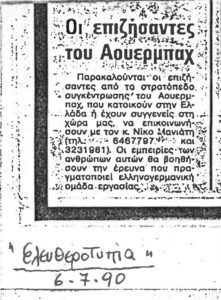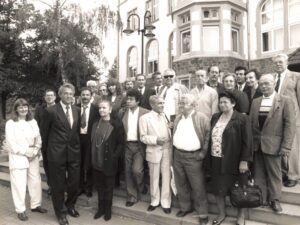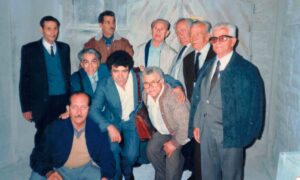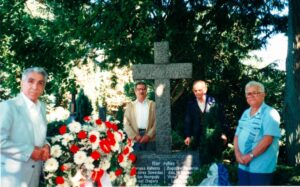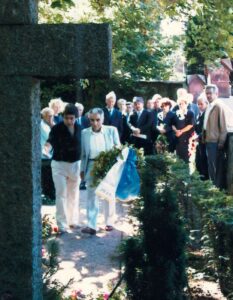Forced labour: from Kokkinia to Auerbach
City
Full Description
On a cursed Thursday morning
Traitors rounded us up on Osia Xeni
And delivered us to Chaidari
Beets, carrots, cabbages, that’s all we live on
Patience, brothers, for Freedom is close!
(The song of the tunnel, Auerbach 1944-1945,
as quoted in the written testimony of Viktoras Skoufalos, item OL009)
The Tragedy of Kokkinia took place on Thursday, August 17, 1944. The Greek collaborationist military groups known as Security Battalions stockaded the area of Kokkinia and rounded up all men over the age of 15 on Osia Xeni Square.[1]Those who were known to the collaborators for their participation in the Resistance were tortured and executed on the spot to set an example. Others were sent away to be executed. Most of the gathered crowds, thousands of Kokkinia residents, were taken to the SS army camp in Chaidari. A few days later, two months before the withdrawal of the Nazi army from Greece, the last shipment of Greek prisoners-forced labourers was sent to Germany. A few of them, about 130 people, were dropped off in the area between Bensheim and Auerbach in Hesse, where they worked for the Heymann military industry.[2] For eight months, the hostages of Auerbach worked to build a factory hidden inside a mountain quarry. At least fifteen of them lost their lives there and were buried in a mass grave outside the wall of the Auerbach cemetery.
This unknown story was unearthed when, in 1987, a group of Greek students discovered a rock next to the wall of the Auerbach cemetery engraved with some Greek names among others. [3] In 1990, a research team sent a letter to Nikos Maniatis, a social worker who had migrated to Germany, asking him to locate survivors from Auerbach. Upon receiving the letter, Maniatis published an announcement in some Athenian newspapers[4] and was eventually able to contact some of the survivors. In spring 1991, he met seven former hostages taken from the Osia Xeni Square. As he mentions in his text, ‘After 46 years they didn’t recognise each other, even though most of them lived in Kokkinia. They were deeply moved when they showed the number carved on their arm by I.S. They embraced each other and exchanged stories from Auerbach’.[5]
In spring 1992, the Municipal Council of Bensheim invited the hostages and their relatives to visit the city on the Municipality’s expense. Nikos Maniatis accompanied them. [6] After that, six more such trips were organised, the last one in November 2003. By that time, five of the hostages had died. [7] The Municipal authorities built a monument on the site of the mass grave that the students discovered in 1987. [8]
In the mid-1990s, Nikos Maniatis encouraged Viktoras Skroufalos, one of the hostages, to write about these events and the experience of forced labour in Auerbach. [9] In 2004, Giorgos Maniatis, the son of Nikos Maniatis, an anthropology student, wrote a paper on the forced labourers which provides a comprehensive account of the events and includes a transcript of Skoufalos’ handwritten testimony (pp. 31-35). [10] Giorgos Maniatis is also the primary researcher responsible for this entry.
[1] Item OL001: Excerpt from the written testimony of Viktoras Skoufalos / Μεταγραφή της μαρτυρίας στο Τεκμήριο
[2] Item OL002-01: The Heymann company in Bensheim-Auerbach
ItemOL002-02: Letter written by the company requesting forced labourers
[3] Item OL003: List of the dead
[4] Item OL004-01: Newspaper clipping from the newspaper Epikairotita [Current Affairs], 18/07/1990
Item OL004-02: Newspaper clipping from the newspaper Eleftherotypia [Press freedom], 06/07/1990
Item OL004-03: Newspaper clipping from the newspaper To Pontiki [The Mouse], Ιούλιος 1990
[5] Item OL005: Text by Nikos Maniatis describing the process of his investigation and the ensuing visits to Auerbach.
[6] Item OL006: Photograph of the hostages and their families outside the Bensheim town hall in 1992.
[7] Item OL007: Photograph of the hostages and Nikos Maniatis at the entrance to the quarry tunnel.
[8] Item OL008-01/02: The new monument built to honour the hostages who died in Auerbach.
[9] Item OL009: Viktoras Skoufalos’ handwritten testimony.
[10] Item OL010: The transcript of Viktoras Skoufalos’ written testimony by Giorgos Maniatis.
